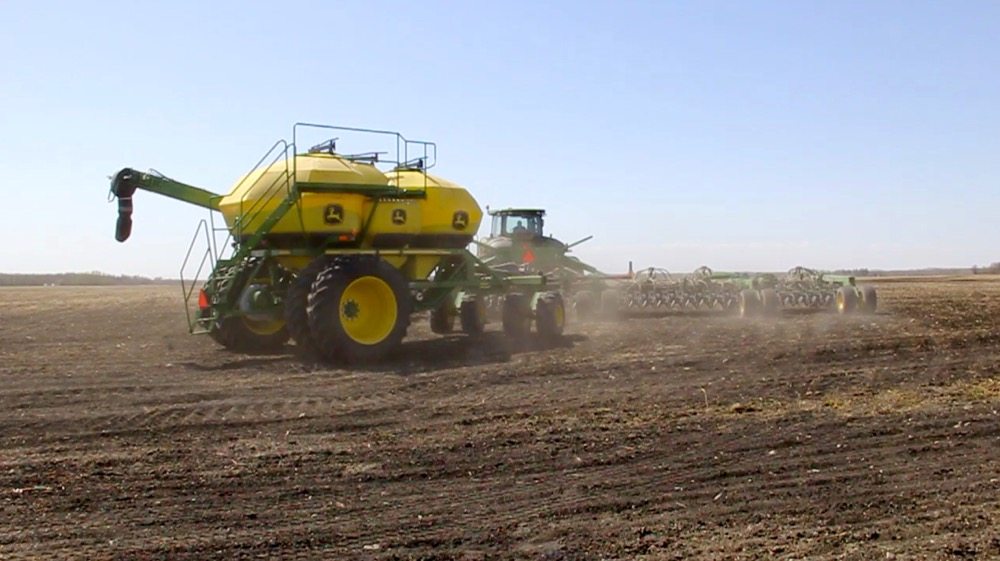Patrick Gross has watched from his living room window as rising West Shoal Lake waters crept closer in recent years, consuming the hay and pastures that have supported his family’s cattle ranch for four decades.
Over the past three years, his usable acreage of owned and Crown lease land on the west side of the lake has dropped from 1,800 acres to 200.
Last June, those waters claimed the road that once carried his three kids to school and his wife Karen to her part-time job in Teulon. His family now lives with her parents in town during the week because a threekilometre stretch of Provincial Road 415 along with sections of 518 are under 20 inches of water. These two key thoroughfares through the region have been closed, perhaps permanently.
Read Also

Mazergroup’s Bob Mazer dies
Mazergroup’s Bob Mazer, who helped grow his family’s company into a string of farm equipment dealerships and the main dealer for New Holland machinery in Saskatchewan and Manitoba, died July 6 from cancer.
And now, faced with downsizing his cow herd because he can’t feed them this winter, the expanding lake waters are swallowing Gross’s life’s dream.
“It makes you feel sick really. Now we’ve pretty much lost everything,” says the 45-year-old rancher, who began building the operation after his father retired in 1991 with hopes of his sons becoming third-generation ranchers. “Anything we’ve done for the kids is gone and it’s not coming back any time soon.”
The Gross family is among 117 area landowners on 42,500 ha that have disappeared into this trio of lakes sandwiched between Lake Winnipeg and Lake Manitoba in the heart of Manitoba’s Interlake.
On the east side of the lakes, Leonard Dziedzic was busy Sept. 29 flipping hay before heading to Woodlands for a meeting to hear the results of a study on the problem commissioned by area municipalities and the province.
His hayfields along the shores of North Shoal Lake are gradually disappearing too. Just as frustrating is lost access to once productive patches of ground that are still above water, but inaccessible.
“This is the third year we can’t get to it,” said the 50-year-old rancher and plumber who has farmed in the area all his life. “We’re still paying taxes and still making payments on that land and there is almost zero productivity out of two-thirds or more.”
Area producers worry lenders will start writing off their equity on the submerged acres.
In addition to suffering the effects of lost revenue, lost mobility and increased costs of coping with the flooding, there is growing resentment over the government’s perceived indifference to the unfolding disaster.
Mention the Shoal Lakes to people from outside of the Interlake and they’ll routinely ask, where the heck is that? It’s a natural question in a province containing no fewer than four Shoal Lakes in addition to the one in eastern Ontario from which Winnipeg draws its water.
According to a delegation of residents who confronted members of the provincial cabinet in Ashern recently, even provincial politicians had to ask – a tale that spread through local folklore like a Prairie wildfire.
As the water levels continue to rise, so has the pressure on government for drainage or compensation or both.
But the long-awaited study concluded it was more efficient to retreat rather than fight the rising waters. Although governments haven’t committed to any course of action, buying out the affected ranchers would cost less than half what it would cost to put in drainage.
By far the cheapest alternative for government would be to do nothing, which, after 10 years of unsuccessful lobbying, is what area residents fear might be the case.
The Gross family bumped up plans to “expand” their farm by buying a farm property on the east side of the lake, closer to Inwood. But even though they are still planning to move the family and what remains of the cattle herd this fall, that property too is threatened by the relentless spread of water from the lakes.
Gross said he and his wife were asking themselves “what’s the use?” as they drove home from last week’s meeting.
Although in his heart, he supports local municipalities in their ongoing battle to convince the province to consider drainage options, he knows he can’t afford to wait the years it might take to get that accomplished. If a buyout offer came along, he’d have no choice but to consider it.
“It just makes you feel pretty defeated,” he says. “We got through BSE, we made it through a couple of dry years, and then we made it through a couple of wet years. And now this is going to wipe us out.” [email protected]



















